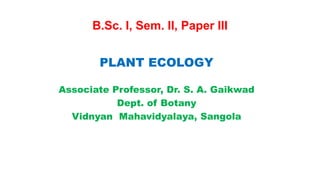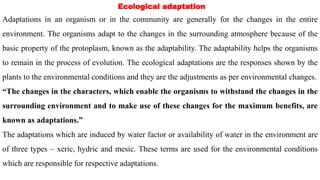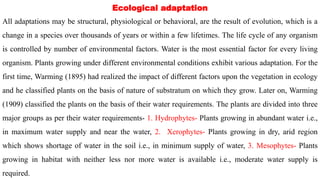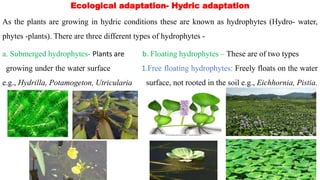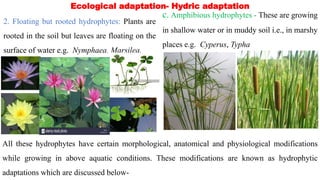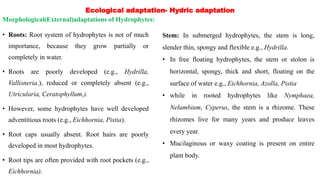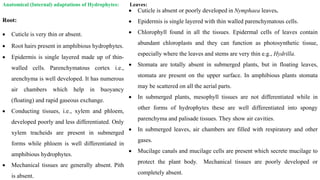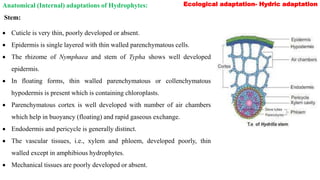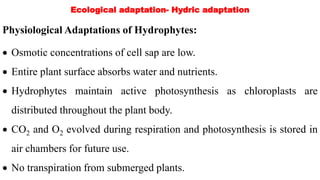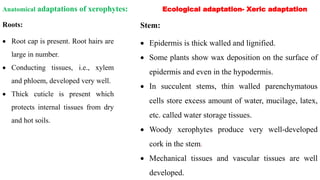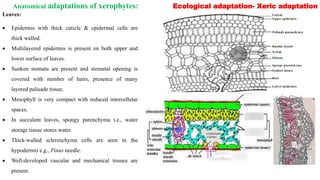The document discusses ecological adaptations of plants in response to environmental changes, focusing on xeric, hydric, and mesic conditions. It details the types of aquatic (hydrophytes) and terrestrial (xerophytes) plants, their structural, physiological, and behavioral adaptations to varying water availability, and how these adaptations have evolved over time. Key adaptations include root, stem, and leaf modifications that enhance survival in respective environments.
